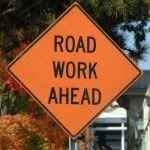DMV Written Test Practice
- DMV
2.
We’ll put your name on your report, certificate, and leaderboard.
Submit
Quiz Review Timeline (Updated): Mar 21, 2023 +
Our quizzes are rigorously reviewed, monitored and continuously updated by our expert board to maintain accuracy, relevance, and timeliness.
-
Current Version
-
Mar 21, 2023Quiz Edited by
ProProfs Editorial Team -
Jun 12, 2012Quiz Created by
Holly_zombie










 Back to top
Back to top






